Understanding Drug Addiction
Learn About Drug Abuse & Addiction
While many substances such as alcohol or prescription medications can be benign or even helpful in the correct doses, sometimes people use them so much that the substance begins to cause harm. Other substances, such as meth or cocaine, are harmful no matter the dose. When a person begins to use a substance to the degree that it becomes harmful, that person may meet criteria for a substance use disorder.
There are many types of substance abuse, and they can range from having too many drinks when out with friends to taking more than the prescribed dose of an anti-anxiety medication to using meth. Any kind of substance abuse has the potential to cause tremendous pain and difficulty in a person’s life, but thankfully there is hope available to those who wish to overcome their substance abuse.
Statistics
Statistics for Drug Abuse
A study from 2012 found that one in ten people in the U.S. had abused prescription or illegal drugs, and this abuse is costly: nearly $700 billion was lost to crime, lost productivity, and healthcare costs associated with substance abuse. Deaths from both prescription and illicit drugs increased an average of 230% from 2001 to 2003. In the same time frame, deaths from benzodiazepines, or benzos, quadrupled, and deaths from heroin more than quintupled.
Causes & Risks
Causes & Risk Factors of Drug Addiction
Substance abuse arises from a complex combination of both genetic and environmental factors such as the following:
Genetic: A person’s risk of developing a substance use disorder is somewhat heritable. People with close relatives—parents or siblings—who have a history of substance abuse or mental illness are more likely than others to develop a substance use disorder. The National Institute on Drug Abuse (NIDA) has identified a few clusters of genes that may make certain people more vulnerable to substance abuse.
Environmental: While genetics can influence a person’s vulnerability to substance abuse, environment affects how genetic vulnerabilities may or may not be expressed. Exposure to severe chronic stressors, such as abuse, neglect, poverty, violence, or unemployment can increase a person’s chance of developing a substance use disorder.
Risk Factors:
- Family history of substance abuse or mental illness
- Personal history of substance abuse or mental illness
- Exposure to trauma or severe chronic stress
- Neglect or abuse as a child
- Friends who use substances
- Poor self-esteem
- Low level of education
- Impulsivity
- Poverty
- Unemployment
Signs and Symptoms
Signs & Symptoms of Drug Addiction
The signs and symptoms of substance abuse differ depending on the nature of a person’s use. Some common signs and symptoms of substance abuse include:
Behavioral symptoms:
- Excessive energy (if using stimulants)
- Low energy (if using other drugs)
- Secretive or deceptive behavior
- Talking about drugs frequently
- Engaging in risky or impulsive behavior
- Decrease in school or work performance
- Unexplained absences from work, school, or social events
- Sudden financial problems
- Making appointments with several different doctors at a time
- Hyperactivity or restlessness
- Violating laws or personal morals in pursuit of the substance
Physical symptoms:
- Sweating
- Nosebleeds
- Weight loss
- Bloodshot eyes
- Puncture wounds, especially on the arms
- Poor hygiene
- Jitteriness
- Muscle twitches
- Difficulty sleeping
- Oversleeping
Cognitive symptoms:
- Confusion or disorientation
- Difficulty with solving problems or making decisions
- Distorted thought processes
- Heightened attention (if the person is using a stimulant)
- Poor attention (if the person is using a depressant or other drug)
Psychosocial symptoms:
- Loss of interest in formerly enjoyable activities
- Paranoia
- Lack of motivation to fulfill one’s responsibilities
- Sudden angry outbursts
- Failing to attend social obligations
- Mood swings
Effects
Effects of Drug Abuse
Substance abuse can have extremely detrimental effects on a person if he or she does not seek help. These negative effects can include:
- Depression
- Anxiety
- Suicidal thoughts
- Reduced performance at job or school, possibly leading to job loss or expulsion from school
- Infections, such as HIV, from sharing drug paraphernalia
- Damage to heart, lungs, liver, or kidneys
- Strained or broken relationships with family, friends, and children
- Financial problems
- Legal problems, including prison time
- Seizures
- Loss of cognitive abilities
- Brain damage
- Coma
- Death
Co-Occurring Disorders
Drug Addiction and Co-Occurring Disorders
Sometimes people who abuse substances do so initially as an attempt to cope with another disorder. People with substance use disorders often meet criteria for other disorders, including:
- Eating disorders
- Learning disorders
- Personality disorders
- Attention-deficit/hyperactivity disorder
- Depressive disorders
- Bipolar disorder
- Anxiety disorders
- Post-traumatic stress disorder
- Obsessive-compulsive disorder
Withdrawal & Overdose Effects
Effects & Symptoms of Withdrawal from Drugs
Effects of withdrawal: When a person abuses substances, his or her body eventually becomes accustomed to the presence of the substance. If that person then attempts to stop using the substance, his or her body must readjust itself to operating without the substance. This readjustment process, known as withdrawal, can be extremely uncomfortable and even dangerous. Though the exact symptoms of withdrawal will vary based on which substance a person is using and how long that person has been using it, the following are some common withdrawal symptoms:
- Paranoia
- Digestive problems, such as nausea, vomiting, and diarrhea
- Watery eyes
- Runny nose
- Exhaustion
- Insomnia
- Agitation or irritability
- Loss of appetite
- Hot or cold flashes
- Seizures
- Suicidal thoughts
- Tremors or shakes
- Seizure
- Powerful cravings for more of the substance
- Aches and pains
- Sweating
Effects of overdose: Over time, a substance begins to have less of an effect on the person using it, requiring him or her to take more to achieve a high, possibly leading to an overdose. The symptoms of an overdose differ depending on the drug taken, but they can include the following:
- Shallow or labored breathing
- Bluish tint to lips and fingertips
- Confusion
- Hallucinations or delusions
- Hot or cold flashes
- Sweating
- Cold or clammy skin
- Excessively high or low blood pressure
- Seizure
- Rapid or slowed heartbeat
- Loss of consciousness
- Coma
- Death











